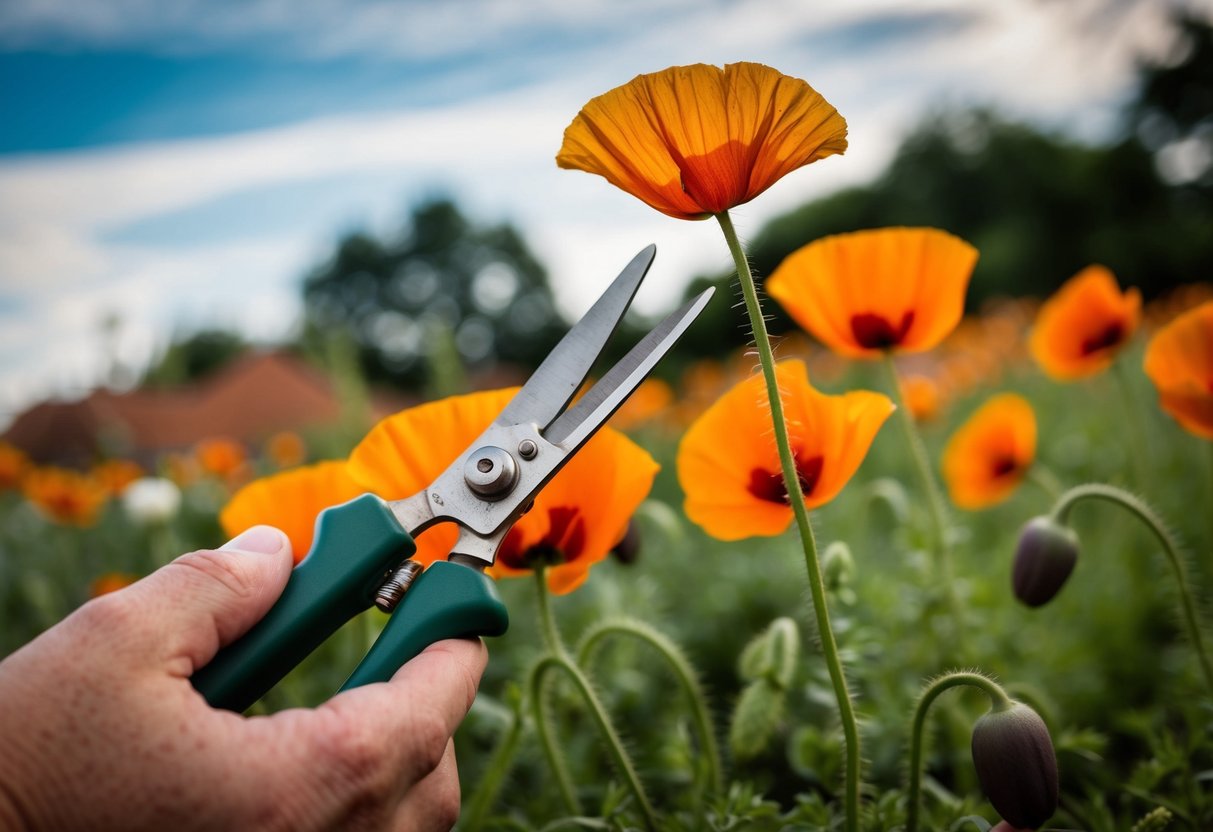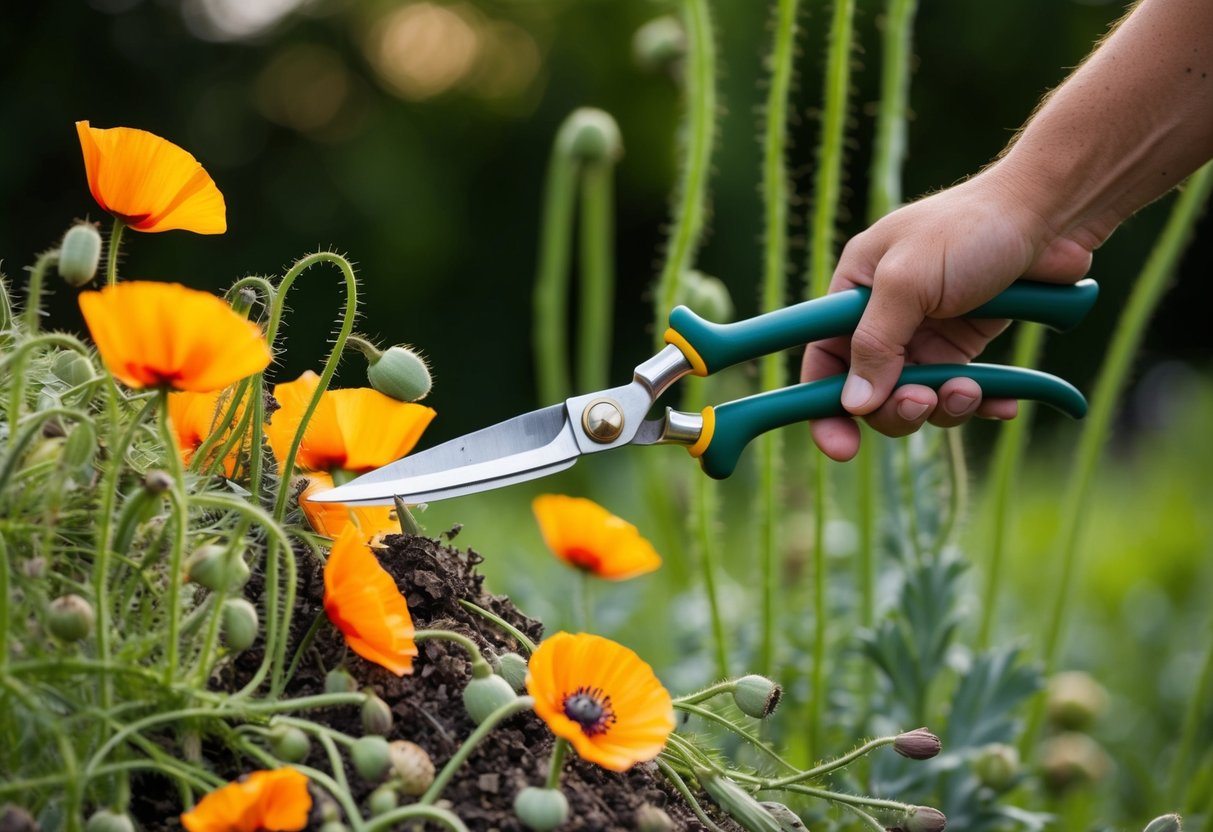Should I Deadhead Annual Poppies? Tips for Vibrant Blooms
If you’re wondering whether you should deadhead your annual poppies, you’re not alone. Many gardeners ask this question as they aim to keep their gardens vibrant. Deadheading annual poppies can actually help reduce self-seeding and might keep your garden in better shape if you’re concerned about poppies taking over.

When you leave the spent flowers on annual poppies, they often drop seeds back into the soil. This can be great for naturalizing your garden, but it might also lead to more poppies than you want next season. If you prefer a more controlled look, removing the faded blooms might be a good option.
Thinking about how much time you want to spend in your garden can also help you decide. Deadheading can sometimes be a little time-consuming, but it offers more control over the plant’s appearance. So, consider whether that extra bit of effort is worth having a tidier garden space. If you’re interested in more information, you can check out tips for deadheading poppies.
Importance of Deadheading

Deadheading poppies is an essential task for any gardener looking to maintain a vibrant and blooming flower garden. Removing faded flowers not only encourages new blooms, but it also helps prevent unwanted self-seeding.
Promoting Blooming
When you remove faded flowers from your poppies, you help the plant focus its energy on producing more blooms instead of seed pods. Cutting off these old flowers redirects the plant’s resources, allowing it to sustain a longer blooming period.
Using sharp garden snips or scissors, you can easily snip the flower head at the base. With new flowers emerging, your garden stays colorful, and you get to enjoy a full display throughout the growing season. Frequent deadheading ensures that your poppies continue to flourish beautifully.
Preventing Self-Seeding
The process of deadheading not only promotes more blooms but also prevents poppies from self-seeding. If the faded flowers are left unattended, they can turn into seed pods. These pods eventually release seeds, leading to more plants popping up in unintended areas.
If you prefer controlled garden planning, removing spent flowers is the way to go. By taking off the faded heads before they form seed pods, you manage where and how new plants grow. This control can help maintain the appearance and order of your garden space, allowing you to achieve your desired landscape look.
Understanding Poppy Varieties

Poppies come in a variety of types, each with its own unique characteristics. Knowing the differences between annual and perennial poppies, as well as the most popular poppy species, can help you make informed decisions for your garden.
Annual vs Perennial Poppies
Annual poppies, like the field poppy and the California poppy, bloom for a single season. They are often part of wildflower mixes that bring color to gardens and attract pollinators. These require deadheading to encourage more blooms.
Perennial poppies, such as oriental poppies and Icelandic poppies, return each year. They need less maintenance once established. While annual poppies are best suited for vibrant, short-term displays, perennials provide consistent color year after year.
Popular Poppy Species
Oriental poppies are known for their large, bold blooms and can be a stunning addition to any garden. They thrive in well-drained soil and full sunlight, easily becoming focal points in borders. Himalayan poppies, with their unique blue flowers, prefer cooler climates and shaded areas.
Icelandic poppies offer a delicate look and are often grown in cooler regions for their frost resistance. On the other hand, the California poppy is a hardy, drought-tolerant variety with bright orange flowers. Each type of poppy adds distinct beauty to your garden, allowing you to choose based on your climate and aesthetic preferences.
How To Deadhead Poppies

Deadheading poppies helps them bloom longer by redirecting their energy away from seed production. Done right, this process can keep your garden vibrant throughout the season.
Best Time to Deadhead
It’s important to deadhead poppies just after the petals drop. This prevents the plant from putting energy into seed development. If you wait too long, the plant will focus on producing seeds instead of new blooms. Early in the morning or late in the afternoon are ideal times. These times help you avoid strong sunlight, which can be draining for both you and the plant. Regular checks on your poppies will help you catch faded blooms in time.
Proper Deadheading Technique
Use a clean pair of garden shears to make a precise cut. Cut the flower stem just above the set of leaves nearest to the bloom. This helps maintain the plant’s overall shape and keeps it healthy. Be careful not to damage the foliage or other parts of the plant. For bigger gardens, consider tools like hedge trimmers for efficiency. Clean your tools before starting to prevent spreading any plant diseases. Always aim for a clean cut to promote quick healing and encourage more summer flowers throughout the season.
Poppy Care After Deadheading

After deadheading your annual poppies, it’s essential to focus on proper care. This involves ensuring adequate watering and preventing diseases and pests to keep your plants healthy and thriving.
Watering and Fertilizing
Poppies need moderate watering. Make sure not to over-water them, as this can lead to root rot. Water the soil when the top inch feels dry to the touch. It’s important to maintain consistency without flooding the plant.
Fertilizing is also key. Use a balanced fertilizer to provide essential nutrients. Adding organic matter like compost can improve soil texture and nutrient retention. This helps your poppies bloom beautifully and grow strong.
Disease and Pest Prevention
Keeping your poppies healthy involves vigilant monitoring for diseases and pests. Powdery mildew is a common issue. Ensure good air circulation by spacing your plants adequately and trimming back overgrown foliage.
Check for pests regularly. Aphids can be managed through soapy water sprays or introducing beneficial insects like ladybugs. Always remove diseased leaves promptly to prevent the spread and keep an eye on changes in plant health.
Encouraging Healthy Growth

Growing healthy poppies requires attention to soil, light, and water conditions. Ensuring proper sowing techniques and care during transplantation can significantly boost the vigor and beauty of your poppy plants.
Optimal Soil and Sun Conditions
Poppies thrive best in full sun. Aim for at least six hours of sunlight each day to maximize blooming. When it comes to soil, you’ll want moist but well-drained soil to prevent root rot. Good drainage is crucial, so adding sand or grit to heavy soil can improve the drainage.
Check your soil’s pH, aiming for neutral to slightly acidic levels. If you’re unsure of the pH, test kits are available at most garden centers. Adjust pH using amendments like lime for acidity or sulfur for alkalinity.
Sowing and Transplanting Tips
When you sow poppy seeds, timing and technique matter. It’s best to scatter seeds directly onto the soil surface after the last frost. Poppy seeds need light to germinate, so do not cover them with soil. Press them gently into the soil to ensure contact.
If you’re transplanting, handle young plants carefully. Prepare the area in advance, and ensure the soil is both well-drained and enriched with compost. Dig a hole that’s slightly larger than the plant root ball and water thoroughly after planting. This will help the roots settle in well.
Once planted, water them regularly but avoid waterlogging the soil. Thanks to poppies’ drought-tolerant nature, they typically don’t require excessive watering once established.







